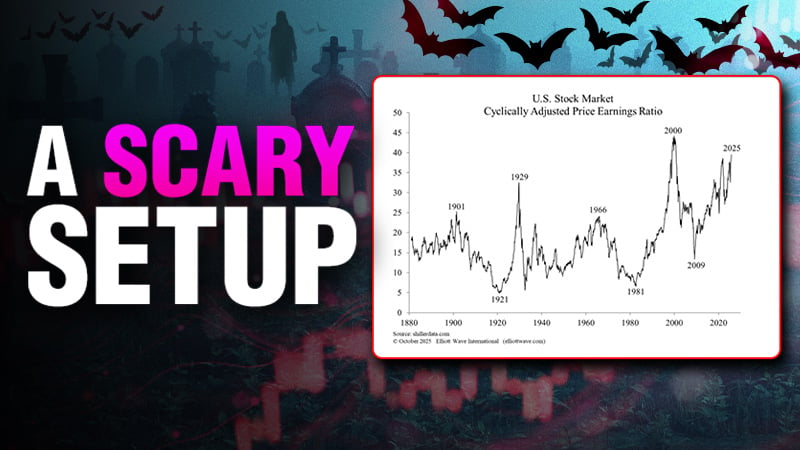Netflix (NFLX)’s recent fall was foreseeable through the lens of Elliott waves.
If you’re of legal drinking age and grew up in the United States, you probably remember the pneumatic device we all learned as children for identifying the planets in our solar system. It went like: My (Mercury) Very (Venus), Educated (Earth) Mother (Mars) Just (Jupiter) Served (Saturn) Us (Uranus) Nine (Neptune) Pizzas (Pluto).
That was, until the fateful day, seventeen years ago on August 24, 2006, when the International Astronomical Union dropped a bombshell that Pluto was not, in fact, the ninth planet in our galaxy; but rather, it was merely a dwarf star.
They announced this astronomical demotion as if millions upon millions of Americans such as myself didn’t have “Pizzas” burned into our brains. For 76 uninterrupted years this was the galactic order. And now, we’re just supposed to accept Pluto’s ousting. No, thank you.
This, you might (or might not) say, is a harmless denial of the fact that the old planetary model has changed. It’s kinda of like when we all just agree to not notice when a main character in a TV show is replaced with a different actor.
But in other cases, like when traders and investors stay loyal to old financial models — well, that can be problematic. I’m talking about “fundamental” analysis, which is a broad term for any new-moves-market paradigm that claims events unfolding outside a market is driving said market’s price trends.
One problem with this model is the sheer volume of data circulating the digital airwaves on any given day. And even if the mainstream analysts are quick to react to the news, they are reacting — which, by definition, puts them behind a market move, not in front of it.
Take, for example, the recent performance of Nasdaq giant Netflix, Inc. (Nasdaq: NFLX). On August 17, NFLX was down, with prices at a 2-month low. And, as these news items from the day show, the “fundamental” experts mirrored back the stock’s weakness:
- “Netflix is overpriced due to limited potential subscribers, historical data showing low revenue growth rates for companies of its size, and high discount rates for future cash flows…the current stock price is massively overvalued.” — Aug. 17 Seeking Alpha
- “Netflix (NFLX). With potential profits on the table, investors might consider cashing in rather than holding onto the stock.” — Aug. 17 Go Banking Rates
- “The streaming gold rush is over” — Aug. 17 Yahoo Finance
The “fundamental” news did little more than restate the obviousness of NFLX’s decline AFTER the said decline took place — not when it began nearly a month earlier on July 19.
That day a month ago, the streaming giant’s stock stood at a 17-month high. And again, the same “fundamental” experts who were bearish amidst an entrenched downtrend one month later were then bullish amidst an entrenched uptrend. Consider these headlines from July 16-8:
- “Netflix Stock: Streaming Video Leader Crushes Subscriber Goal” — July 18 Investor’s Business Daily
- “Netflix Stock Hits 17-Month High as Analysts Forecast ‘Competitive Advantage’ From Hollywood Strike — July 17 Forbes
- “Netflix Stock: These Analysts Are Extremely Bullish Headed into Earnings” — July 16 Motley Fool
It’s been around longer than Pluto held its 9th planet designation, but it is time for the old “fundamental” model of market forecasting to be demoted. And in its place, let the Elliott wave model shine.
Here, we reopen our Trader’s Classroom vault on July 12. There, editor Robert Kelley showed this labeled price chart of Netflix, which outlined the multiple opportunities in the stock’s near-term path:
“Netflix has had a very nice run off last year’s low and it’s looking like we have a third wave up here about done. But there should soon be a small pullback in wave 4 to [411.50, 399.27].”
That was a bearish break. Which was then followed by a bullish one:
“If we do see a drop down into that area, it should be a nice set-up for a [move] back up.”

From there, Netflix continued its third wave rally to 477 on July 19 before turning down in a multi-week decline to 403 on August 17, within Robert’s cited Elliott wave target window. Note that his forecast was made without a single mentioning of earnings or other “fundamentals.” Strictly Elliott wave price patterns on a chart.
Maybe one day I’ll be able to embrace the fact that Pluto is no longer the ninth planet in our solar system. (Or maybe one day, scientists will get with the program and return it to its rightful, in my opinion, place).
But for traders and investors, there’s no time to waste in understanding the real driver of market trends — investor psychology, which unfolds as Elliott wave patterns directly on price charts. Of course, not all Elliott wave interpretations turn out to be right. (In that same July 12 Trader’s Classroom, Robert mentions another stock where his wave count was wrong.)
But unlike “fundamental” models, Elliott wave analysis alerts you to trend and trend changes proactively and identifies clear price levels that help manage risk every step of the way. Watch the latest lessons now to see which stocks have landed in the Trader’s Classroom galaxy today!
A Universe of Opportunity Awaits!
Imagine being shown an Elliott wave-labeled price chart of a leading exchange-listed stock.
The chart is labeled with the preferred wave count, including critical price levels to mitigate risk.
Then, you press Play and watch an expert analyst explain in comprehensive detail how to recognize the relevant Elliott wave pattern on one’s own, for future (and often, ongoing) opportunities.
This is every Trader’s Classroom lesson in a nutshell.
From Bank of America to Hess Corp. (2 stocks on our watchlist today) — our education-meets-action Traders Classroom is where the high-confident rubber meets the road of opportunity!






